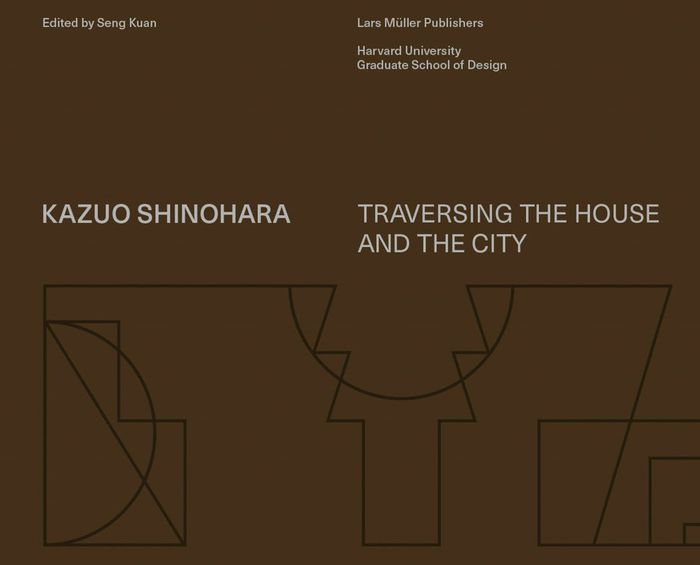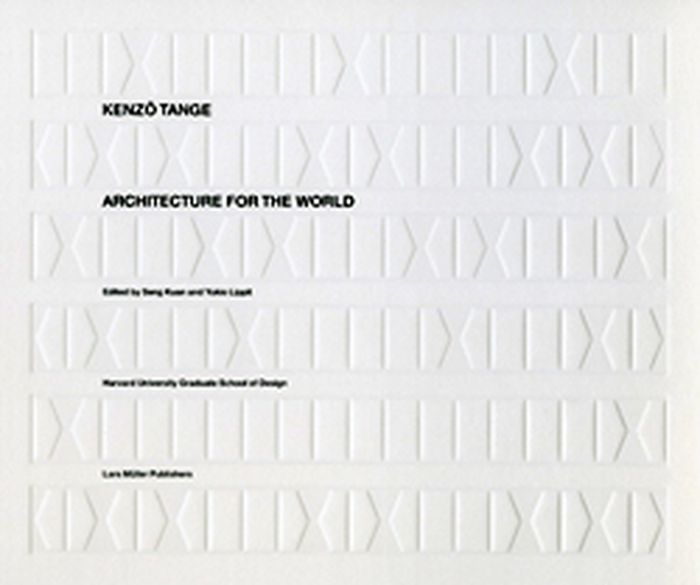books
$87.00
(available to order)
Summary:
An architectural view of one of the world's most dynamic and exciting cities. Shanghai's explosive development since the early 1990s has provided students and fans of architecture with myriad examples of superlatives: from the world's tallest buildings to its longest bridges. As timely as it is comprehensive, this collection of essays confronts the broader concerns of(...)
Contemporary Asian Architecture
November 2004, Munich
Shanghai : architecture & urbanism for modern China
Actions:
Price:
$87.00
(available to order)
Summary:
An architectural view of one of the world's most dynamic and exciting cities. Shanghai's explosive development since the early 1990s has provided students and fans of architecture with myriad examples of superlatives: from the world's tallest buildings to its longest bridges. As timely as it is comprehensive, this collection of essays confronts the broader concerns of Shanghai's role as a harbinger of China's future and a global testing ground. The essays cover the socio-political, cultural, and historic aspects of the city as well as offer more pointed topical analyses of urban design, preservation, and the developments of the city's waterfronts. Throughout the book, color photographs and illustrations examine thirty ongoing and completed projects. The resulting overview presents a vibrant city of tension and contradiction, one that both mirrors and drives China's struggle to break free from economic constraints while adhering to its political ideals.
books
November 2004, Munich
Contemporary Asian Architecture
$55.95
(available in store)
Summary:
Built around snatches of discussion overheard in a Beijing design studio, this book explores attitudes toward architecture in China since the opening of the Treaty Ports in the 1840s. Central to the discussion are the concepts of ti and yong, or “essence” and “form,” Chinese characters that are used to define the proper arrangement of what should be considered modern and(...)
April 2002, Cambridge, Mass.
Architectural encounters with essence and form in modern China
Actions:
Price:
$55.95
(available in store)
Summary:
Built around snatches of discussion overheard in a Beijing design studio, this book explores attitudes toward architecture in China since the opening of the Treaty Ports in the 1840s. Central to the discussion are the concepts of ti and yong, or “essence” and “form,” Chinese characters that are used to define the proper arrangement of what should be considered modern and essentially Chinese. Ti and yong have gone through various transformations--for example, from “Chinese learning for essential principles and Western learning for practical application” to “socialist essence and cultural form” and an almost complete reversal to “modern essence and Chinese form.” The book opens with a discussion of cultural developments in China in response to the forced opening to the West in the mid-nineteenth century, efforts to reform the Qing dynasty, and the Nationalist and Communist regimes. It then considers the return of overseas-educated Chinese architects and foreign influences on Chinese architecture, four architectural orientations toward tradition and modernity in the 1920s and 1930s, and the controversy over the use of “big roofs” and other sinicizing aspects of Chinese architecture in the 1950s. The book then moves to the hard economic conditions of the Great Leap Forward and the Cultural Revolution, when architecture was almost abandoned, and the beginning of reform and opening up to the outside world in the late 1970s and 1980s. Finally, it looks at the present socialist market economy and Chinese architecture during the still incomplete process of modernization. It closes with a prognosis for the future.
$67.50
(available to order)
Summary:
Kazuo Shinohara (1925–2006) is one of the greatest and most influential architects of Japan's postwar generation.Shinohare himself divided his creative work into four styles. In placing his later, institutional scale works of his fourth style, which have been overlooked until now, alongside the iconic houses of his earlier career, this book establishes the architect’s(...)
Kazuo Shinohara: traversing the house and the city
Actions:
Price:
$67.50
(available to order)
Summary:
Kazuo Shinohara (1925–2006) is one of the greatest and most influential architects of Japan's postwar generation.Shinohare himself divided his creative work into four styles. In placing his later, institutional scale works of his fourth style, which have been overlooked until now, alongside the iconic houses of his earlier career, this book establishes the architect’s insistence on the equivalation between the house and the city. New scholarly essays, interviews with clients and collaborators, and translations of Shinohara’s key texts are complemented by previously unpublished archival drawings and personal travel photographs by Shinohara. The volume reframes his architectural achievements in terms of his oeuvre as a whole and situates them in the broader cultural and social context in Japan and globally.
Architecture Monographs
$60.00
(available to order)
Summary:
Kenz Tange (1913–2005) is a peerless figure among twentieth-century Japanese architects, unmatched in his talent, influence, and versatility. A leading force of the Metabolist movement, he was the first non-Western architect whose works would be embraced as universal in value. This unique assemblage of new scholarship by an international team of experts reframes Tange(...)
Kenz Tange: architecture for the world
Actions:
Price:
$60.00
(available to order)
Summary:
Kenz Tange (1913–2005) is a peerless figure among twentieth-century Japanese architects, unmatched in his talent, influence, and versatility. A leading force of the Metabolist movement, he was the first non-Western architect whose works would be embraced as universal in value. This unique assemblage of new scholarship by an international team of experts reframes Tange according to the contingencies of Japanese modernism as well as contemporary discourses of cultural identity, technology, urbanization, and the synthesis of the arts. Case studies on celebrated works—Hiroshima, Tokyo Bay Plan, and Yoyogi Stadiums—clarify Tange’s wide-ranging interests and design methodology. Illustrated with archival drawings and period photographs, this volume provides fresh and compelling perspectives on the practices, discourses, and production contexts of Tange’s work as well as the architecture and urbanism of postwar Japan. Kenz Tange—Architecture for the World represents the most serious and comprehensive reassessment of Tange in the English language in decades.
Architecture Monographs


